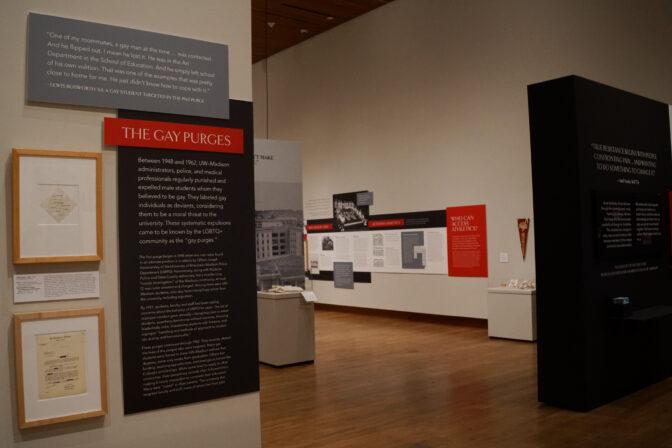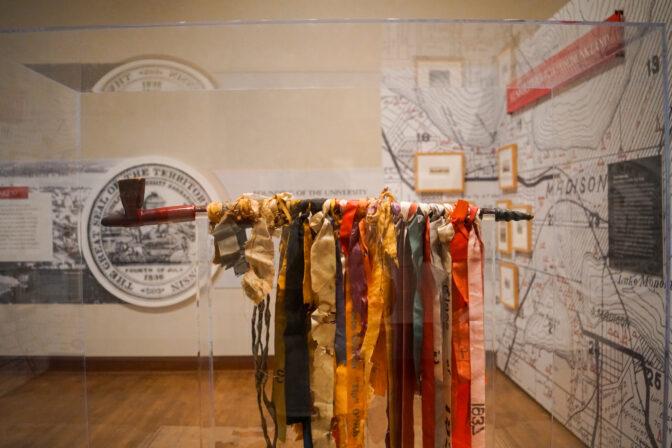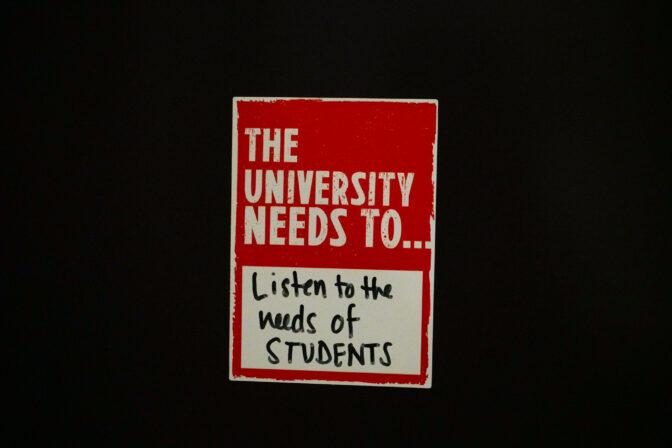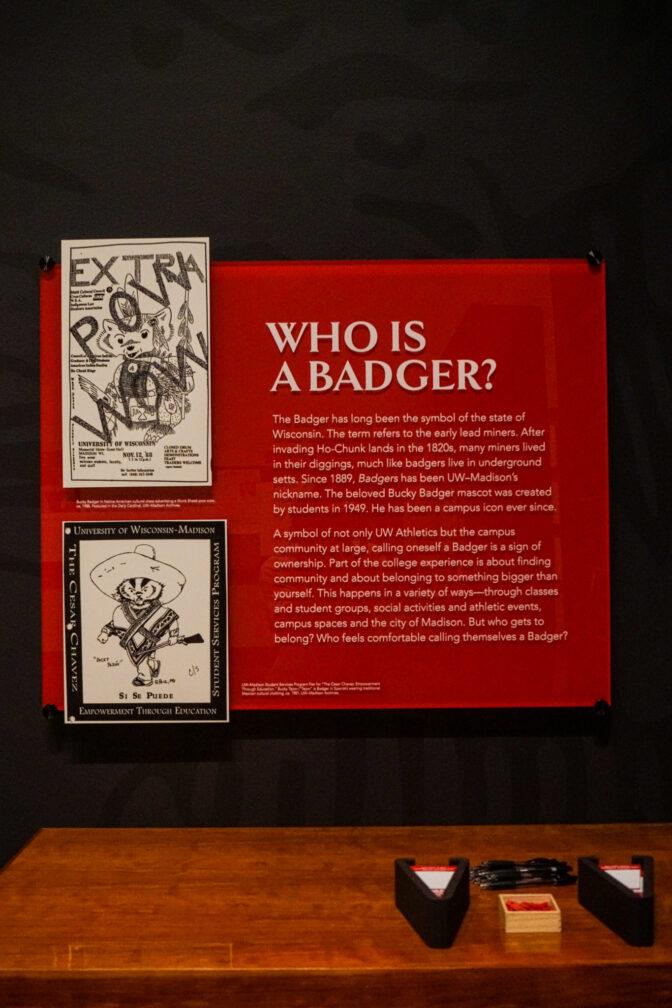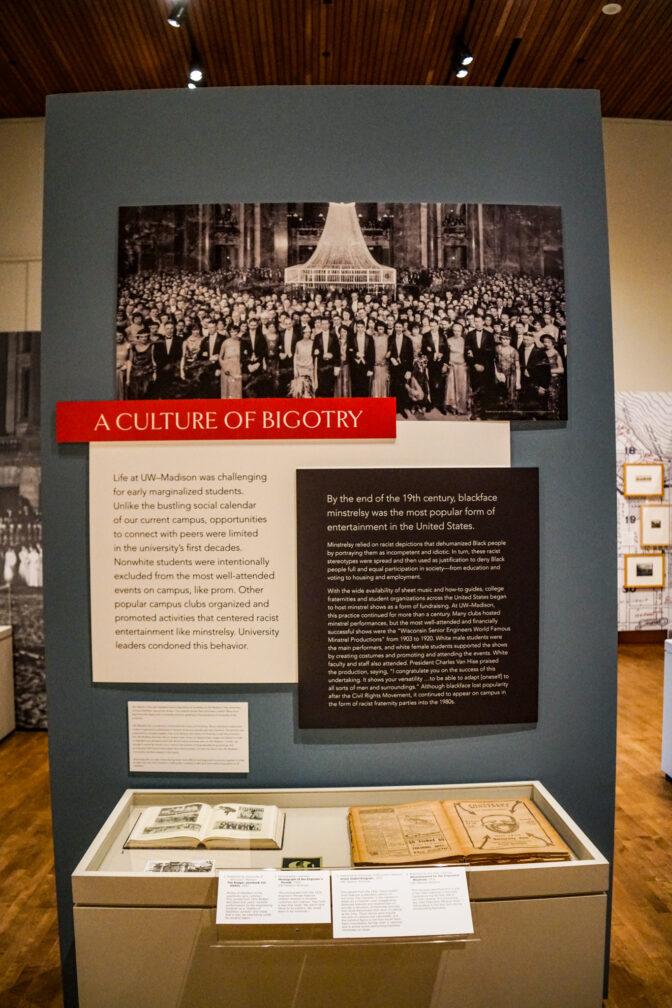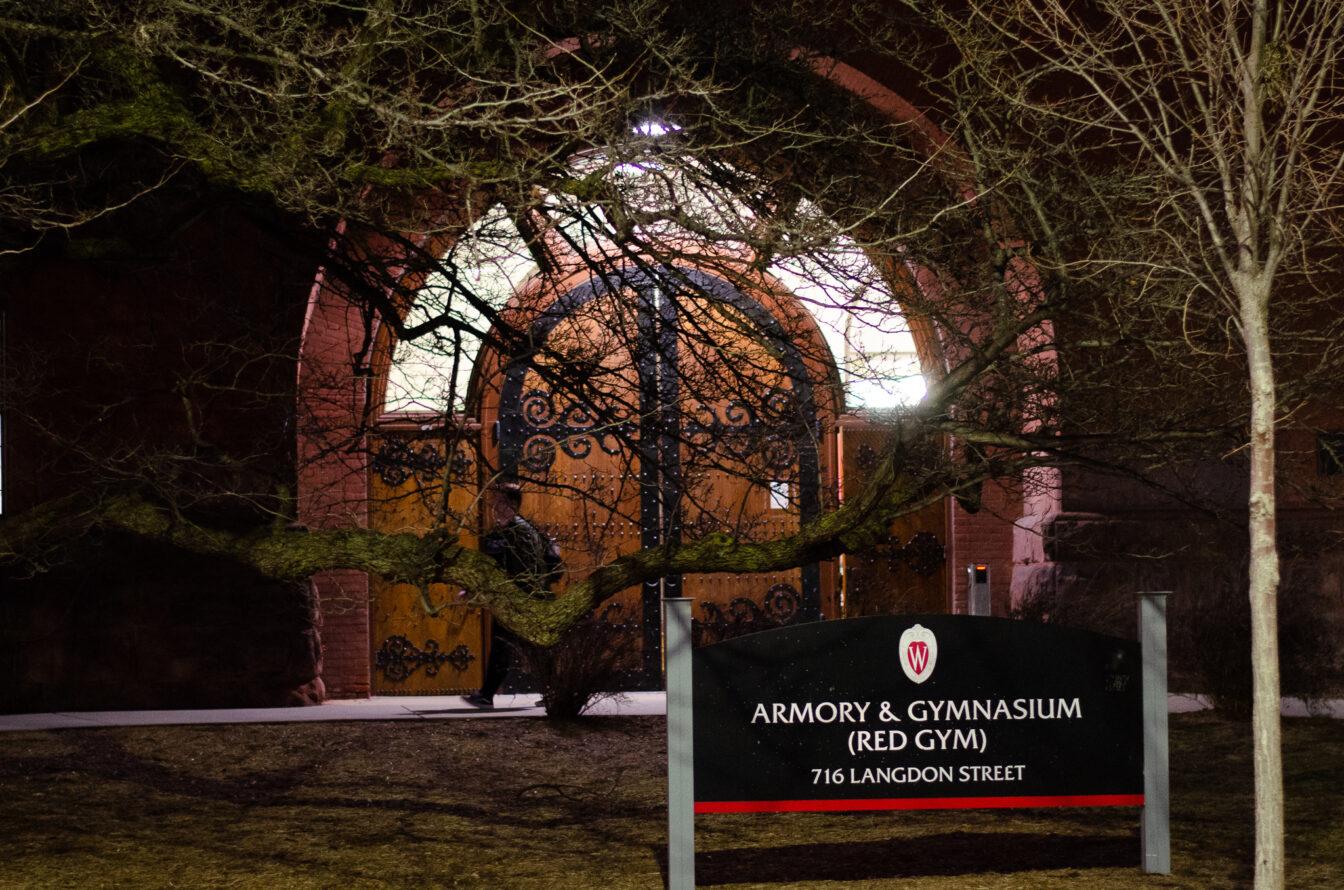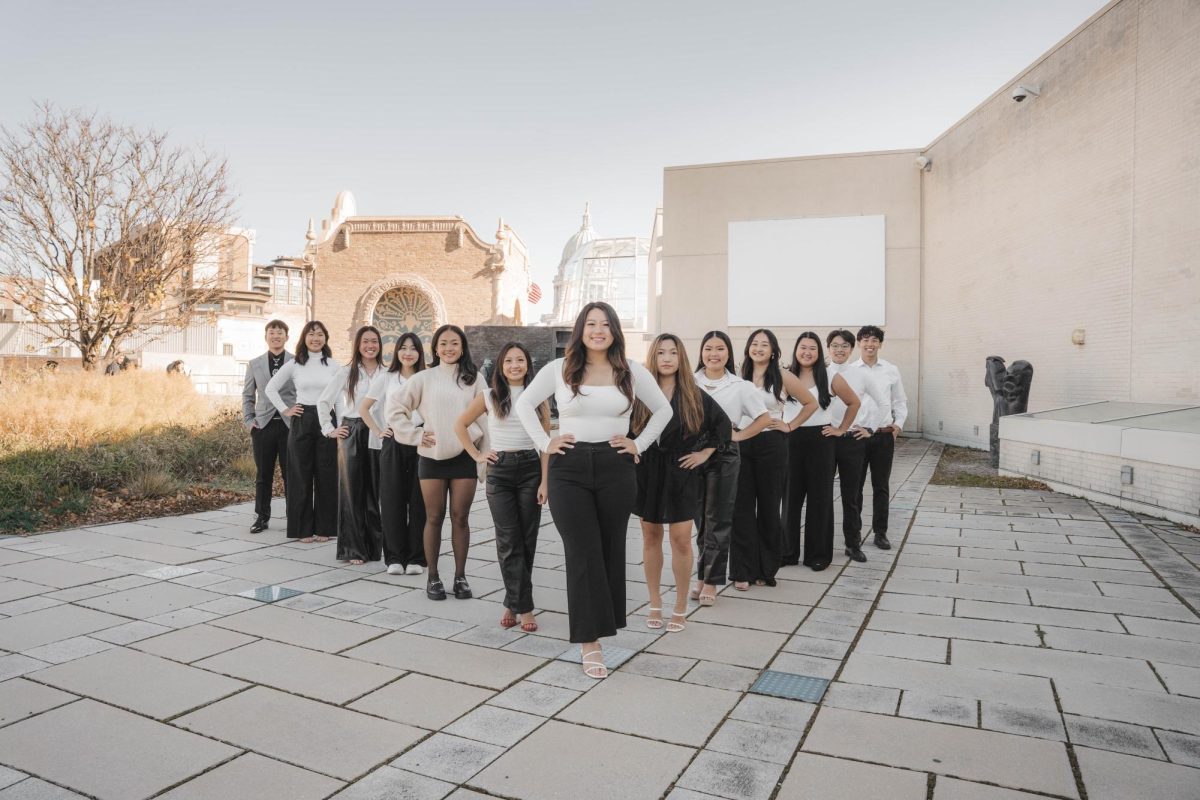The University of Wisconsin’s Public History Project unveiled its exhibition “Sifting and Reckoning: UW–Madison’s History of Exclusion and Resistance” Monday at the Chazen Museum of Art.
The exhibition focuses on the stories of people who faced discrimination on campus, with stories from the 1860s to the present day. These stories and artifacts are all from the UW Archive, with three pieces from the Wisconsin Historical Society, according to Public History Project Director Kacie Lucchini Butcher.
The stories in the exhibition cover discrimination faced by students who are Jewish, African-American, Mexican, Chinese, Hmong, Indigenous and gay, as well as women and students with disabilities. This discrimination was prevalent in academics, sports, housing, student life, fraternities and more.
But the exhibition is not all negative. It also highlights student protests, landmarks and cultural association openings.
“A lot of these older stories that we found in the archives, these people, these communities were banded together to fight for change and get these organizations that have lineages to the [Multicultural Student Center] on campus,” Public History Project Assistant Director Taylor Bailey said.
UW has funded the Public History Project since 2019. The project originated from a study group tasked with two objectives — looking into two organizations bearing the name of the Ku Klux Klan on campus in the 1920s and investigating the history of systemic discrimination on UW’s campus. Former Chancellor Rebecca Blank commissioned the project due to the results of the study group, according to the Public History Project’s website.
The project asked UW students to tell their stories of discrimination on campus, some of which are displayed within the exhibition. Butcher said the project also asked students what being a Badger means to them and if they feel welcomed by this identity.
“The first 20 responses that I got from students … were so complex, complicated, nuanced and interesting,” Butcher said. “I think whether you’re a person who does feel really confident calling yourself a Badger or you’re somebody who doesn’t, seeing each other’s responses will be an important part of continuing that conversation and giving space to that conversation.”
The exhibition has several spaces for visitor participation, especially from students. There is a space for visitors to answer the question “Do you call yourself a Badger? Why or why not?” as well as a space for visitors to commit to change for the future or to discuss what UW needs to change to help diversity.
Butcher plans to use these two visitor-led spaces as another source of data for next steps, as well as to encourage visitors to interact on a deeper level with the exhibition.
“I hope people are inspired not only by the communities that are formed, by the actions taken, but [also] by a lot of the individuals and the vision that they had, for how they could make the university better and how they went out and did it,” Butcher said.
The exhibition features several artifacts that perpetuated discrimination at UW, including the pipe of peace, a commencement tradition between the 1890s and the 1940s. The pipe, featuring colorful ribbons and exaggerated Indigenous imagery, was handed down from the senior class to the junior class each year. The pipe represents early discrimination against Indigenous people while on Ho-Chunk land, according to the placard at the exhibition.
UW Chief Diversity Officer LaVar Charleston said the exhibition gave him chills — it demonstrates the progress UW has made but acknowledges there is still work to be done.
“That is the nature of history and that is how we can learn and grow and the understanding uncovered adds so much value to our understanding of what this place is and why it’s so special,” Charleston said.
Charleston said visitors should not feel bad about what they experience in the exhibition but should recognize it and look towards the future of change in diversity and inclusion in UW.
The exhibition will run at the Chazen Art Museum until Dec. 23, after which it will be available online on the Sifting and Reckoning website.
“I just want people to come to our exhibit, visit our website or come to a lecture series,” Butcher said. “[I want people] to engage with us, to engage with the histories on the wall and the stories, to learn new things, to ask really crucial and critical questions about the university’s past and to participate in this really unique moment that we have right now to have time and space to reflect on our past and how it intersects with our present.”
